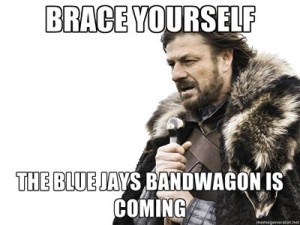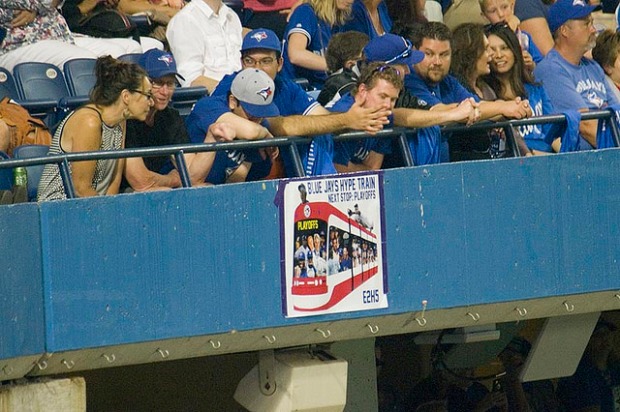These words would sound familiar to you if you have participated in the Sprott School of Business Frosh Week (Sprosh) as an Intern (First Year Student), Manager (Frosh Facilitator), Vice President (Vice Head), President (Head), Board of Director , or CEO (Frosh Coordinator).
“Hey (Sprosh/President’s Name/Team Name/Interns/Managers/Specific Person’s Name) !
Hey What?
Hey (Sprosh/President’s Name/Team Name/Interns/Managers/Specific Person’s Name)!
Hey What?
Show me how you get down!
No Way!
Show me how you get down!
Ok! B-U-S-I, that’s the way we get BUSI, BUSI
B-U-S-I, that’s the way we get BUSI, BUSI! “
As you all know, this cheer is the most popular and widely used throughout Sprosh Fall Orientation week. I surveyed the Sprott community and asked people two questions: “How they did learn the cheer? “. Also, “Is it still stuck in their memory from their first Sprosh week?” I received various responses to these questions.
Knowing the main Sprosh cheers relates to the concepts of Associative Learning, Observational Learning and the Role of Memory in Learning.
Learning refers to a relatively permanent change in behaviour that is caused by experience. This experience does not have to affect the learner directly and we can learn vicariously by observing events that affect others. Learning is an ongoing process that we experience on an everyday basis.
From my personal experience, I still remember the popular Sprosh cheer as it was one of the first cheers I learned on the first day as a Sprosh Intern at Sprosh 2013: Corporate Jungle. According to the Sprosh participants I had surveyed, the B-U-S-I cheer is easily learned as this cheer sets Sprosh apart from the Engineering Frosh and Regular Frosh cheers we hear during frosh week. Personally, I learned the cheer from observing my facilitators and they were constantly calling out other team with the exact same cheer every time. From the results of my survey, the majority of my sample mentioned they learned the cheer from observing others and with its catchy words that were very easy to remember.
As Sprosh week progressed, as we kept on saying the same cheers over and over again, I began to learn those cheers memorized word by word, which links to the concept of Repetition in the Associative Learning Process. Associative learning effects occur when repeated exposures increase the strength of stimulus-response associations and prevent the decay of the associations in memory. In this case, the B-U-S-I cheer was repeated so many times during Sprosh week that the cheer finally etched itself into my mind.
The B-U-S-I cheer applies to the concept of observational learning as myself and a lot of the people I surveyed learned the cheer through observing the environment around them. Observational learning occurs when people watch the actions of others and note the reinforcements they receive for their behaviours. This type of learning involves people storing these observations in memory as they accumulate knowledge, using this information as a later point to guide their behaviours. This process of imitating others is known as modelling. A lot of the first year students, including myself modelled our energetic behaviour from the display of behaviour our Managers and Presidents were displaying during the week.

Sprosh 2013 with my teammate, Dilan Ropero (left), myself (middle), and Team President, Emily Lu a.k.a. Casper (right)
In order for observational learning in the form of modelling to occur, four conditions must be met: Attention, Retention, Production Processes, Motivation, and Observational Learning. In the attention stage, the consumer focuses on a model’s behaviour. During Sprosh, all first year students focused on the Sprosh leaders to see how energetic they were and to see that it is all right to act crazy and energetic. In the retention stage, the consumer retain the behaviour in the memory. During Sprosh, we all had to remember what our Sprosh leaders say and do in terms of learning the cheers. During the Production Processes stage, the consumer has the ability to perform the behaviour, During Sprosh, it was up to each intern to cheer and scream at whatever sound level they felt comfortable using. In my case, I felt right at home and I cheered my heart out until I lost voice two days later. In the Motivation stage, it involves a situation where the behaviour is useful to the consumer to perform the action. During Sprosh week, it was up to each participant to see whether they feel motivated to come out of their comfort zones to cheer and represent their pride they have for their own respective teams and for the Sprott community.
Finally, the B-U-S-I cheer definitely plays a role in memory when learning something new. Memory involves a process of acquiring information and storing it over time so that it will be available when needed. If you ask anyone who volunteered for Sprosh in recent years, a lot of their experiences are locked inside their heads and those experiences can be surfaced, if prompted by the right cues.
The Memory Process starts with the volunteer’s experiences being placed as inputs, processes, and outputted for later use (In this case, when they volunteer for Sprosh) in revised form. In the Encoding stage, the information is placed in memory. The B-U-S-I cheer is placed in memory after Sprosh week as the cheer got stuck in my head from its catchy tone. In the Storage stage, the information is retained in memory and warehoused for later use. As my first year progressed, the cheer was still retained in memory while I was waiting for the right time to scream it loud. Finally, in the Retrieval stage, the mind accesses the desired information as needed. For example, when I volunteered for Sprosh in 2014 for the first time, I had to access the memory of those cheers in order to keep with team spirit and to share those cheers with the first year students I was looking after for that week.
Overall, during that first week, all I wanted to learn that week is about the campus in general , and how I can get involved with the school community. But, during that week,, the only thing I actually learned that week is not only the Sprosh cheers, but why business students are very passionate about Sprott.
It’s been two years since my first Sprosh week, and the cheers are always still in mind and. The reason?
You can never stop being “BUSI, BUSI” during one of the most craziest and exciting times of the school year.
Source:
Solomon, Michael, Katherine White and Darren W. Dahl (2014) Consumer Behaviour: Buying, Having, and Being, Sixth Canadian Edition. Toronto: Prentice Hall Canada.

























